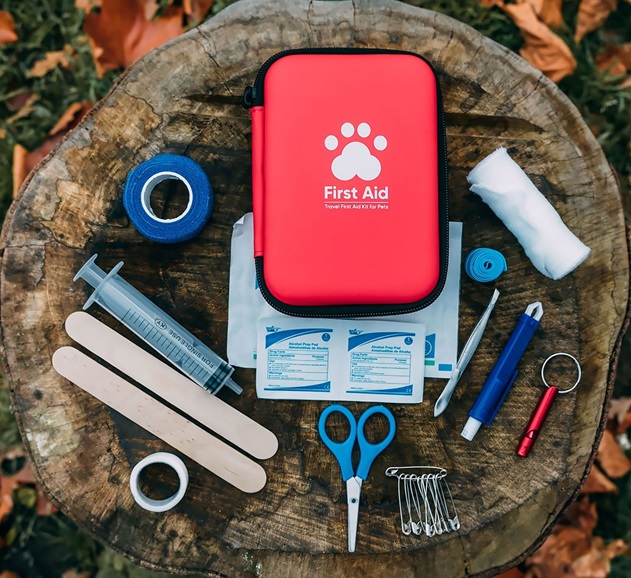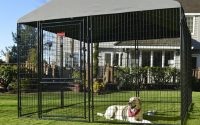Essentials for Assembling the Ideal Dog First Aid Kit
As a dog owner, there are many things you have to provide to make sure your beloved furry friend is its happy and healthy self as a true member of the family. In addition to dog-proofing the house to avoid any unwanted injuries or issues, and acquiring the necessary dog products for hygiene, sleep, nutrition and hydration, it’s also a must to assemble a first aid kit.
It may not seem like that big of a deal at first, especially since you have a vet you rely on, and you think there’s nothing that could possibly go wrong, but remember emergencies do happen and you can’t be in the know of when they would occur. I know, it’s not easy to think of the worst case scenarios, but doing so before they happen can be the decisive factor in keeping your pet safe and sound. This is what makes a first aid kit so important to have on hand at all times, whether you’re at home, or outside running errands or travelling.
What Items Should Be in a Dog First Aid Kit?

Alright, let’s cut right to the chase with the list of essentials you need for a reliable dog first aid kit. You’re going to need:
Basic Supplies
Since dogs are very active, regardless of their age, they can be prone to cuts, scrapes, and abrasions, particularly on their paws. This calls for piling up on wound dressing in the form of adhesive tape, gauze, vet wrap for a snug fit without sticking to the fur or reducing blood flow, bandage, and cotton balls or swabs for easy application of ointments and sprays.
Basic Tools
Sometimes, it can be tricky to apply these aforementioned supplies as your dog doesn’t stay still, or you can’t cut the needed amount with bare hands. That’s why a pet first aid kit isn’t complete without basic tools that come in handy, and these are essentials in the likes of blunt-tipped scissors, tweezers perfect for removing splinters, thorns, or ticks, and nail clippers in case of a nail injury when running or playing.
To avoid getting any bites from a distressed dog, I’d advise you to also pack up a muzzle. A magnifying glass is your best friend when looking for injuries, and parasites, so be sure to add one in the list of essentials. Lastly, don’t forget to get a rectal dog thermometer to check up Fido’s temperature when suspecting sickness or infection. A needleless syringe can be useful for easy application of liquid ointments, medication, and administering of fluids to a dehydrated pet.
Basic Meds
Treating the wound before dressing is a must too, so be sure to equip your dog first aid kit with antimicrobial wipes and liquid bandage that’s made specifically for dogs to avoid any discomfort or infection. You should also buy antibiotic ointment to nip bacterial infections in the bud, styptic powder to stop minor bleeding, and pain killers as per the vet’s suggestion.
To avoid poisonings, activated charcoal is helpful as it prevents some toxins from being absorbed, but in some cases hydrogen peroxide can be of use too. To be on the safe side though, be sure to check this with the vet prior to adding it to the kit. A specialised cream to soothe skin discomfort like itches and rashes can be most helpful as well, and I’d also like to recommend getting sterile eye wash solution as your pup’s eyes can get irritated too, more so with flying debris when he or she is running and playing.
If you’re going to be travelling, or you’re trying to enrich your dog’s diet with new foods and treats, it’s advisable to keep probiotics at hand as stomach issues are a common problem. Generic probiotic is okay, but for something more specific, be sure to ask for the vet’s advice.
Documentation
What’s the use of emergency contact numbers and medical records if you can’t find them when you need them most – in times of emergency? To avoid any stressful situations, it’s a must to always have these essentials around and in easy accessibility. If you’re on the go, always keep a copy of your dog’s vaccination history, medical history, and notes on specific conditions or allergies. These would be most helpful in case you have to go to an emergency vet clinic you haven’t been to before.
Also, keep emergency contact numbers of the vet and the nearest animal hospital as they can be a lifesaver in times of accidents, injuries, or ingestion of toxic substances. These should be shared with the pet sitter, if you get one, as well as your family and friends if they help out with taking care of your pooch. One last bit of crucial info is to add the dosage instructions for any meds you may have in the kit.



